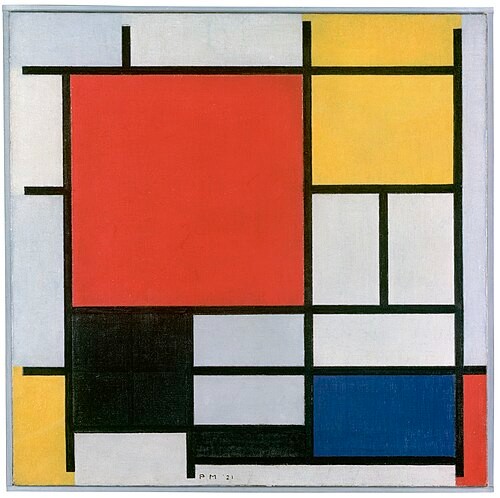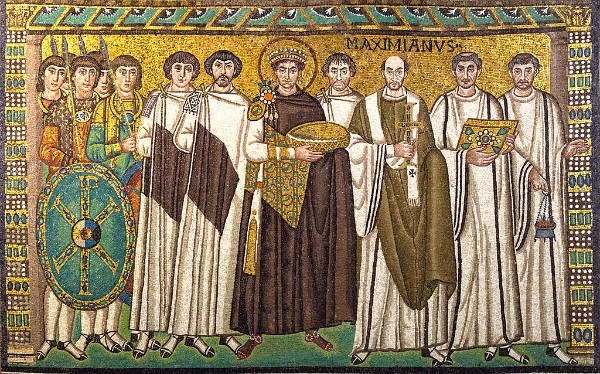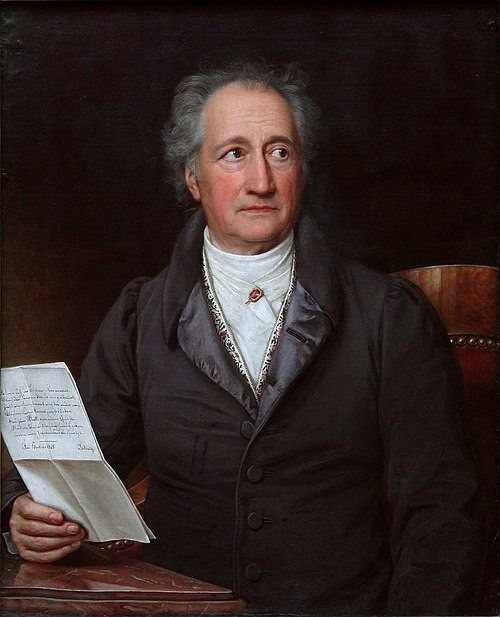Inspirations Behind Philip Sawyers’ Hommage to Kandinsky
The Russian painter Wassily Kandinsky (1866–1944) was one of the founders of abstraction in western art and is also considered one of the most musical of the modern painters. He equated painting with musical composition, saying in 1911, ‘Colour is the keyboard, the eyes are the harmony, the soul is the piano with many strings. The artist is the hand which plays, touching one key or another, to cause vibrations in the soul’.
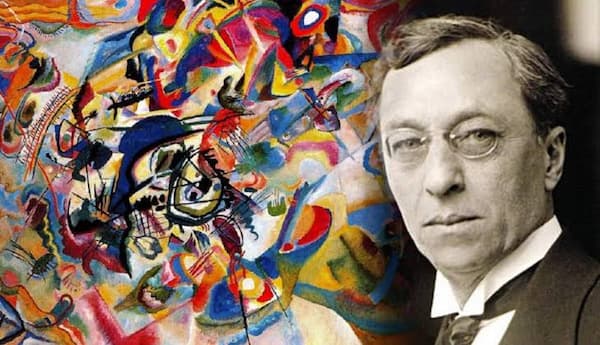
Wassily Kandinsky
American composer Philip Sawyers used Kandinsky as his inspiration source for a work commissioned by the Grand Rapids Symphony in honour of their longstanding Music Director, David Lockington, who premiered the work in September 2014. Sawyers had seen the exhibition Kandinsky: The Road to Abstraction at the Tate Modern in London in 2006 and was struck by the ‘musicality’ of Kandinsky’s paintings.
Where the exhibition tracked Kandinsky’s development as a painter through some 60 works, from his earliest representational paintings to full abstract works, it was one particular 1911 painting that attracted Sawyers’ attention: Composition IV.
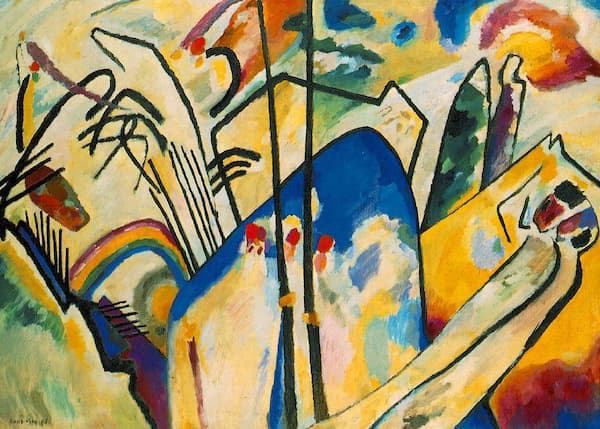
Kandinsky: Composition IV, 1911 (Düsseldorf: Kunstsammlung Nordrhein-Westfalen)
Kandinsky entitled many of his works with musical names, including Fugue (1914), Bagatelle (1916), and other works entitled Improvisation.
Kandinsky’s own comments on the work define it in terms of Colours, Contrasts, and Overlaps. In terms of Colours, the blue at the centre gives the entire work a cold tone. At the top right are separated colours of blue, red and yellow. The black interlaced lines at the top left represent horses and at the bottom right, lying figures.
He saw the contrasts as lying between mass and line, between precision and blur, between line interlacing and colour interlacing, with the main contrast between sharp abrupt movement (battle) and light cold delicate colours. He saw a contrast between blurred and contoured forms, ie., sometimes a line is just a line and sometimes it’s a contour which has line-like qualities.
His final definition includes overlapping contours by colours and that all outlines of the castle are weakened by the sky flowing through. Shape boundaries are overlapped by colours.
The painting has two centres, separated by two vertical black lines, that stand for lances. One centre is filled in blue and the other has interlacing lines.
Kandinsky saw the work as filled with light, cold colours, including the blue mentioned above and the cold yellows. As a picture of war, with the delicate and cold light contrasting with the sharp movement of the horses. The calm movements are mainly to the right and up while sharp movement happens to the left and downward.
Kandinsky saw the ‘sound of colours’ dominating over the ‘sound of shapes’.
British composer Philip Sawyers (b. 1951) was encouraged in his symphonic writing by David Lockington, music director of the Grand Rapids Symphony Orchestra.
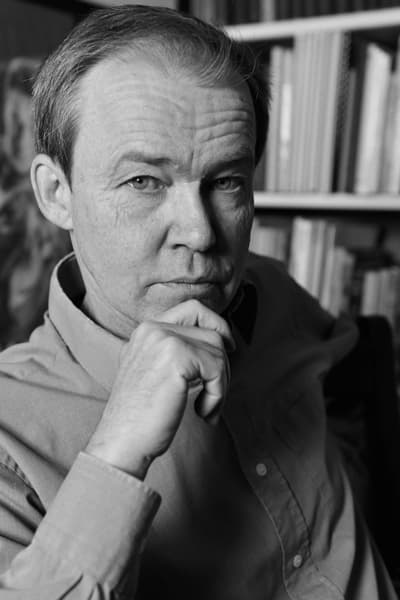
Phillip Sawyers (Photo by Ashwood Photography, London)
A largely self-taught composer, Sawyers began composing as a child and started on the violin at age 13. In 2015, he was appointed the ‘John McCabe Composer-in-Association’ for the English Symphony Orchestra, a position he held until 2018, when he was named the ESO’s Composer Laureate. Both the ESO and the GRSO have given premieres of his works. As a violinist, he was a member of the Royal Opera House Orchestra, Covent Garden, from 1973. He also played in some West End theatre orchestras, for other opera orchestras, and for recording sessions for film and pop music. He decided to return to composing in 1997 and left the ROH Orchestra for a year of study at Goldsmith’s College.
In his description of his Hommage to Kandinsky, he mentioned seeing the Kandinsky exhibition in London in 2006 and his particular focus on Composition IV, saying ‘I deliberately created a musical theme following the ‘lines’ in ‘Composition IV’ of 1911, a bit like a graphic score. This idea first appears in the cellos and basses very near the start of the piece. However, it would be misleading to look for any more similarly literal transmutations.
Philip Sawyers: Hommage to Kandinsky (BBC National Orchestra of Wales; Kenneth Woods, cond.)
For more of the best in classical music, sign up for our E-Newsletter

